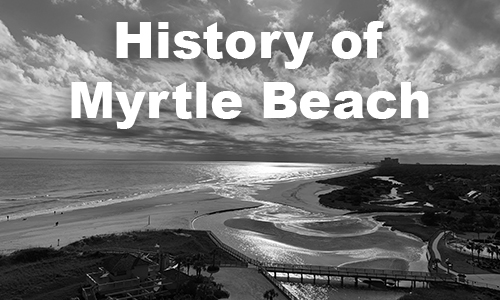
Explorers led by Lucas Vázquez de Allyón landed near the Cape Fear River in the 1520s, searching for a water route to the Far East. They established San Miguel de Guadalupe, the first European settlement in the continental United States, at Winyah Bay, roughly 30 miles from present-day Myrtle Beach, in 1526. That settlement was abandoned the next year when Vázquez de Allyón and most of his 600 fellow settlers died from hardship and disease.
After that, Spanish and French explorers came and went from the area for a few decades.
Frenchman Jean Ribault built a small fort on what is now Parris Island in 1562 and named it Charlesfort in honor of the French King Charles IX. Ribault headed back to France for supplies, leaving 27 men to — literally — hold down the fort. When his return was delayed by a war back home, plus getting imprisoned in England as a spy, his men got tired of waiting and sailed back to France. Not long after, the Spanish dropped by Charlesfort, but only to destroy it.
(Interestingly, Ribault’s name for the colony had better staying power. He called it Carolana, also named for his king. When the English eventually took over, the English King — also named Charles — liked the name and kept it for his new colony.)
Not long after they destroyed Charlesfort, the Spanish built Santa Elena on the same site. From 1566 to 1587, Santa Elena was the capital of Spanish Florida, serving as a base for explorations as far north and west as the Appalachian Mountains. Resistance from Native American tribes and lack of interest from Spain meant that those temporary forts never became permanent settlements, however. Santa Elena was abandoned in 1587, with its residents relocated to St. Augustine, and the Spanish never tried any more colonizing in the area.
Then the English popped in and out for a while. The first English claim had been made in 1497 by explorer John Cabot, in what is believed to be today’s Labrador, Newfoundland or Nova Scotia. The mysterious Lost Colony of Roanoke — with its 100 colonists who disappeared without a trace — was established in 1585 on Roanoke Island in what is now Dare County, North Carolina. Finally, in 1663, King Charles II granted land to eight of his supporters, called the Lords Proprietors or simply Proprietors, and renamed Carolana to Carolina. The first English settlement began in 1670 at Albemarle Point, now part of Charleston.
History records what may be the Grand Strand’s earliest innkeeper: William Gause, who operated a tavern for travelers along the old King’s Highway in the Windy Hill area of North Myrtle Beach beginning around 1740. George Washington stayed in Gause’s inn when he toured the coast in 1791 as president of the new nation.
Looking to explore some of the Grand Strand’s historic sites during your own Myrtle Beach area getaway? Book your vacation at The Cottages at North Beach Plantation — and get ready for a getaway that will go down in your family history!

